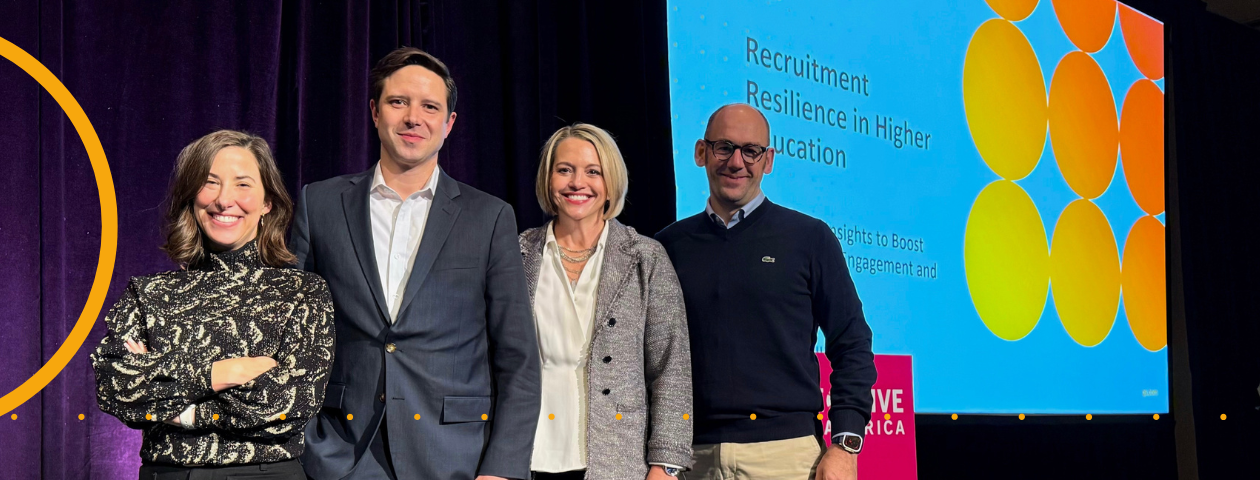
In a world flooded with data, the challenge lies in understanding which metrics truly matter and how to cut through the noise. At The PIE LIVE North America 2024 in Boston, Massachusetts, we explored exactly what US universities can do to build a data-led international student recruitment strategy.
Domestic student numbers in the United States have declined by 1.9 million since 2013, representing a 9% decline overall. Enrollment in private institutions has increased, but this hasn’t offset the decline in public university enrollment.
International recruitment is a key lever of growth and stability for the US and the country has seen significant growth in international student numbers to US institutions post-pandemic.
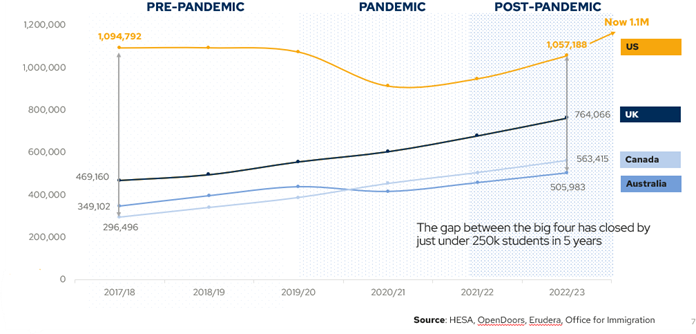
However, global competition is intensifying and the gap between the big four has closed by just under 250k students in five years. With a shift in the political climate following the US elections 2024, the impact on internationalization is yet to surface, but a quarter of international students have said they would be less likely to consider studying in the US following a Republican win.
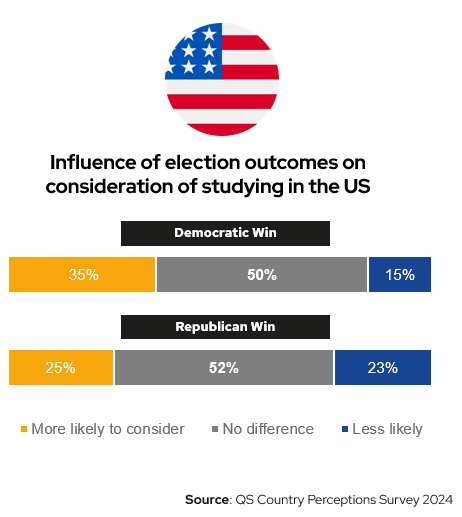
Leveraging current and relevant data and insights is more important than ever to set up a successful international strategy, navigate today’s complexities, identify emerging opportunities, and make timely and impactful decisions. Without actionable insights, institutions risk falling behind in a highly competitive and interconnected environment.
Michelle Wieser, GME Proposition Director at QS, said: “As part of an international recruitment strategy, institutions must recognize that one size does not fit all. It’s important to dig into insights at the regional and even country level to design recruiting plans that address specific needs and concerns of prospective students from different parts of the world.”
Here are five levers that institutions can pull for recruitment resilience:
1. Understand and strengthen your reputation
Over half of students looking to study in the US and Canada say that one of the key priorities when choosing an academic program is good reputation in the discipline (QS Destination: US and Canada). This makes it vital for institutions to be able to articulate their reputation in terms that students can appreciate and internalize. International reputation comprises many audiences, so institutions should consider how they are perceived by academic partners and graduate employers.
A strong reputation can prove critical to effective student recruitment strategies over a long time frame, signaling academic excellence, student employability, cutting-edge research, and a supportive learning environment.
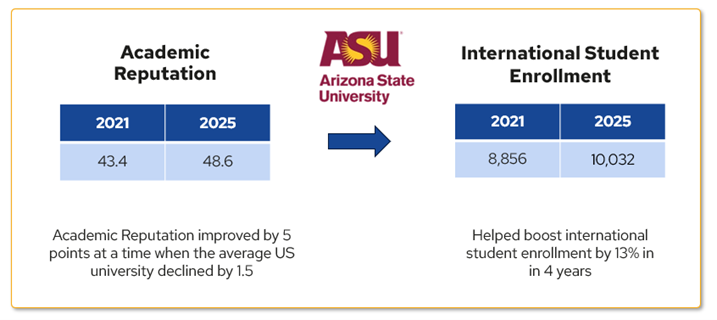
At Arizona State University, there is a positive correlation between the University’s increase in Academic Reputation score in the QS World University Rankings between 2021 and 2025, and a 13% increase in international student enrollments over the same time period.
2. Align strengths to recruitment markets
Knowing your strengths is the first step toward international recruitment success. Being able to identify strengths helps to identify what to highlight to what markets and with what messages. It can enable institutions to shine a light on how they match what students want while leveraging strengths to overcome concerns.
According to the QS International Student Survey 2024, high-quality teaching is vital for students looking to study in the US and Canada. It’s the most important factor when choosing a program for those interested in studying in the US and the second most important factor for those looking to study in Canada (behind affordable tuition fees).
Understanding what prospective students in key source markets expect from universities is an important step to matching your strengths to incoming applicants.
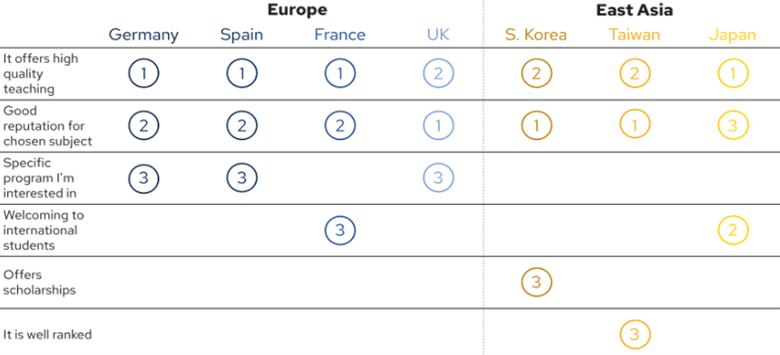
3. Optimize your programme portfolio
Offering the right programs, specializations, courses and modalities is key to attracting international students. Universities can achieve this by providing STEM-designated degrees, specialized master’s programs, dual-degree options, and pathway programs that align with global demands. Incorporating in-demand topics such as artificial intelligence, sustainability, and cybersecurity into specializations and course offerings can further enhance appeal. Additionally, offering flexible on-campus course formats that cater to the unique needs of international students ensures an inclusive and supportive learning environment.
Global interest in STEM-certified GME programs grew by 39% in five years from 2019-2023 (GMAC Prospective Students Survey 2024). Employers are seeking people to fill the increasing demand in STEM fields, including engineering, cybersecurity, healthcare and finance. Employers also value the critical thinking and problem-solving skills learned through STEM education. STEM designation through existing or new programs and dual-degrees signals to employers that students have the skills to take analytics to the next level.
4. Activate strategic brand building
Determining the right recruitment markets requires research to understand the mindset of both the local market and student candidates. It’s important to ask the following questions:
- Is this market a match for my institution’s strengths?
- Is there long-term potential for this market to be a sustainable source of students?
- How long have your competitors had a brand presence in this market?
Online sources, rankings and social media are all important information sources that candidates will use to help them make decisions.
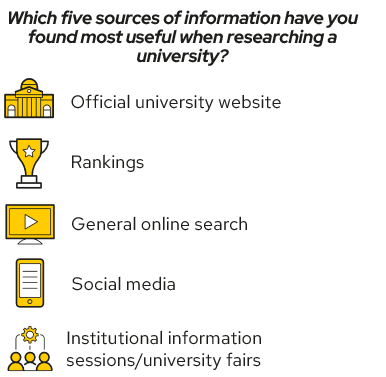
Leveraging institutional strengths while addressing student concerns is an important way to let students know that you understand their worries and can be there to support them, building trust with future cohorts as they move through the conversion funnel.
5. Deliver an exceptional experience
Improving the pre-enrollment experience for candidates needs to be a central tenet of institutional planning. Prospective students have high expectations when it comes to the ways universities communicate with them. Strategies for dealing with candidate enquiries need to be led by their attitudes and strength of feeling on this issue. When dealing with student enquiries, a prompt response is crucial.
61% expect to receive a response to their enquiry within three days, while 50% expect their university application to be turned around within one week (QS Destination: US and Canada). Candidates from Africa and South Asia expect more reassurance from universities in the form of frequent communication once they apply – approximately 80% of candidates from these growth markets expect at least weekly communication with a university after they apply. Candidates in more mature markets in East Asia and Europe feel less desire for frequent communication, which should be factored into marketing strategies.
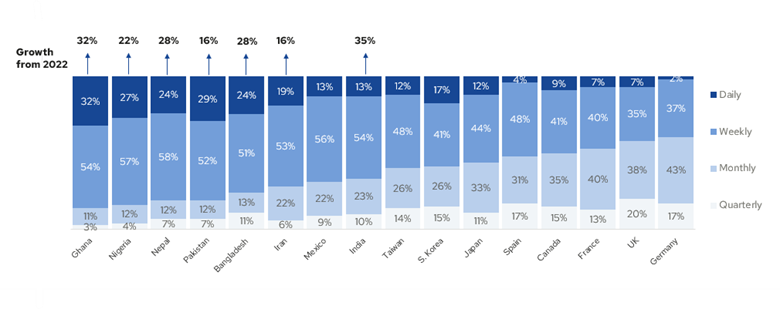
Important actions to take
- Conduct a rankings assessment to understand where your institution currently stands and where it should aim to be.
- Focus on enhancing academic and employer reputation to grow or maintain your position in the rankings.
- Evaluate key elements of reputation that matter most to prospective students, such as teaching quality, safety, sustainability, and other factors, and identify areas for improvement or storytelling opportunities.
- Explore “ratings” as well as traditional “rankings” for broader insights and to build credentials.